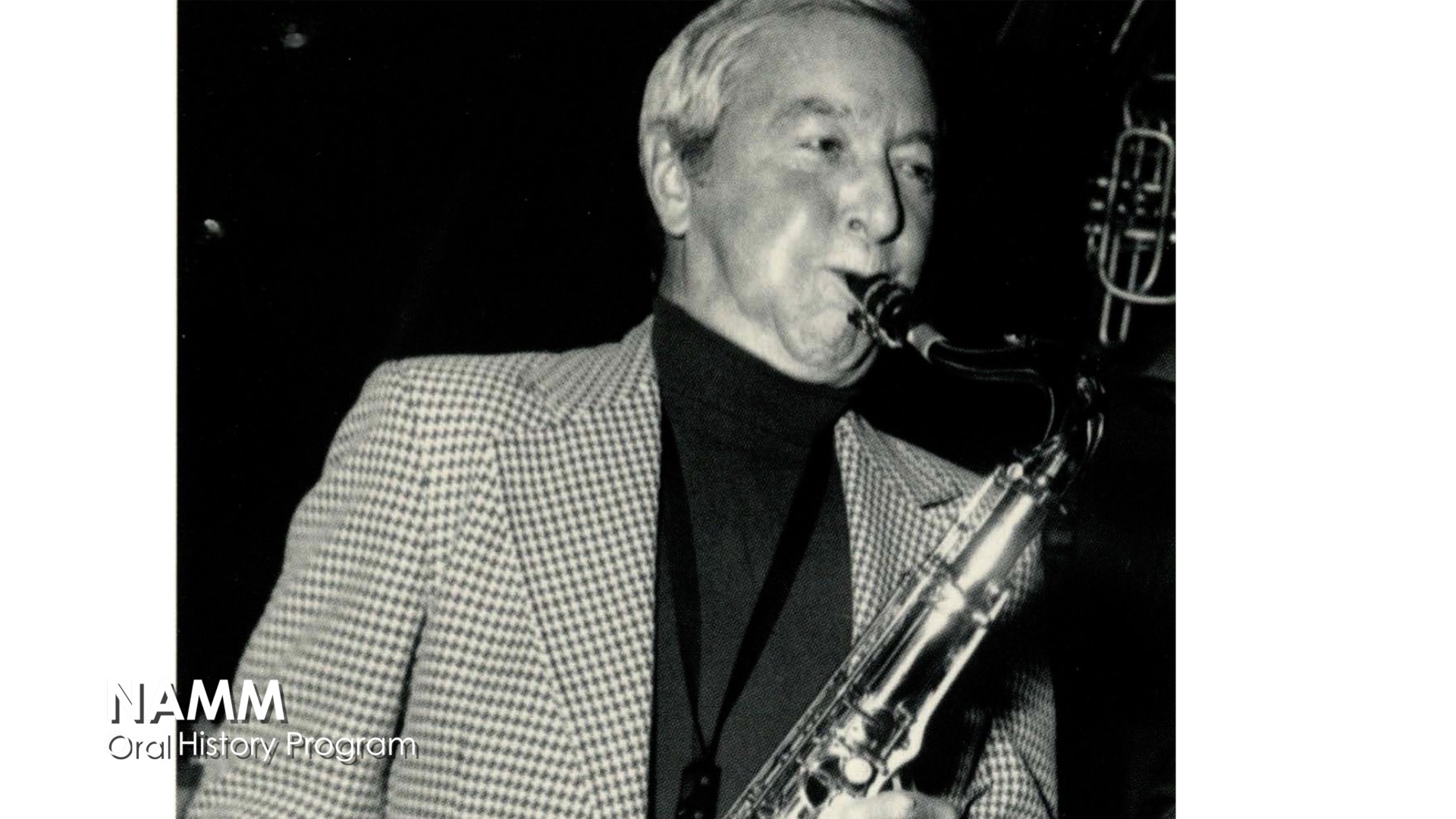I'll make one final comment. I've found nothing to suggest that Eddie Miller ever regularly played a Vito. The link below to a Billboard story from 1981 suggests that Miller was still then playing a Selmer he acquired in 1938.
In its 114th year, Billboard remains the world's premier weekly music publication and a diverse digital, events, brand, content and data licensing platform. Billboard publishes the most trusted charts and offers unrivaled reporting about the latest music, video, gaming, media, digital and mobile...
books.google.com
The OP's post, and the blog response, both contain a number of errors that technicians or historians of saxophones would recognize: dates for Vito, association of Vito with Elkhardt (v. Kenosa), the reliability of the caption of the UMKC photo, the role of a player like Miller in saxophone design, and etc. etc. There seems to be a misunderstanding about what the Big Band and Jazz Hall of Fame was, and a lack of awareness that the organization seems to no longer be functioning. One can see these as wrongheaded errors to be corrected, and go about bluntly correcting them.
But, there's another way to see this. A person builds a relationship with a saxophone that has "Eddie Miller" engraved on the bell. (I first thought this was about family, but some digging proved I was wrong.) After selling the instrument, that person returns to playing, finds the instrument, and is led to begin some research on Eddie Miller and the horn. The Wiki entry for Miller mentions that he was inducted into the Big Band and Jazz Hall of Fame; the person assumes it is a physical place. The setup material for the NAMM site interview posted by Milandro mentions that Miller was recruited as a consultant by Selmer in Elkhardt. The person, probably with little knowledge of which saxophone manufacturer was where, mixes up Vito and Selmer. (crime of crimes --and maybe he did consult with Vito). As mentioned in the blog response, she makes contact with someone who interviewed Miller and that person suggests that Miller did own her Vito. (No way for me to confirm this without a lot of work, but, could be true.) The owner through research is confirmed in her sense of the importance of Miller and the significance of the horn, and wants to know more, and posts on Sax on the Web. How to respond?
This all connects with two professional concerns of mine. I'm trained and have worked as an oral historian, interviewing working people about their lives and participation in significant historical events such as strikes or political campaigns. The point of such work is not to unearth facts (although sometimes leads emerge that can be documented), but to investigate how people reshape and re-interpret their histories over the course of their lives. It seems rather obvious that the interviewer's job is not to correct the person being interviewed (unless you want the door slammed in your face and all the neighbors alerted that you're a jerk), but to try to understand why the story is being told in the way it is being told. This SOW exchange is not the same situation, of course, but it seemed clear from the first post that the OP was not a saxophone historian, but someone with a connection to this instrument looking for more information. You could respond by saying: you've got your facts wrong. Or, you could ask: how did this person come to understand the story in this way? (I guess arguing for the second is "drama." Seems to me much more like common sense, or maybe, common courtesy. YMMV)
Secondly, I teach writing, and, although I don't agree with everything Steven Pinker says, I do agree with his argument that a major problem in communication is "the curse of knowledge:" the difficulty of understanding that other people do not necessarily have the knowledge and understanding that we have. To assume that they do when they don't is to guarantee miscommunication. (Or, as Pinker puts it, that good people will create bad writing, because they don't stop to consider that the jargon and disciplinary logic they are using may have no meaning to their readers.) Again, it seemed clear the OP was not hip to technical and historical discussions of the saxophone: it was a first post.
Edit: Realized I committed the very act I was critiquing. Steven Pinker is a psychologist at Harvard. He wrote a fairly recent book about writing called "The Sense of Style," which draws on his work on the relationship between linguistics and how the mind organizes information.
I hope the OP will come back. I'd love to learn more about her research, and particularly what she found out about the direct connection between Eddie Miller and her horn. The whole thing is a great story. (Not to mention that it led me to a whole book of swing-era tenor licks.)













